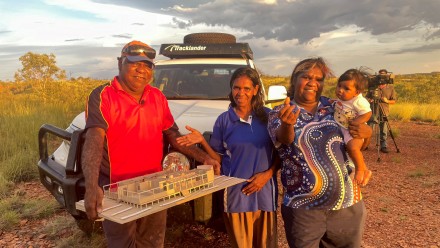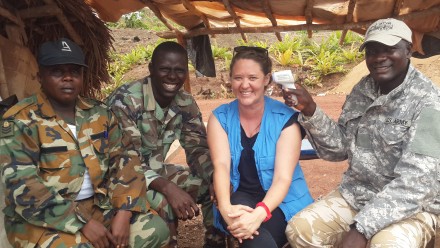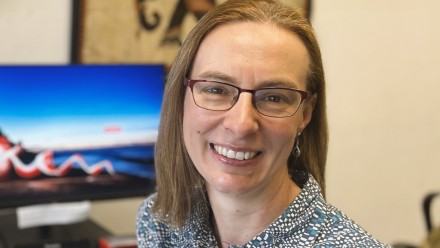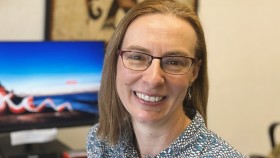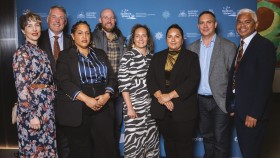August report for Environment, Climate and Health
Share
Good News
Robyn Lucas’ elder daughter, Tracy Slatyer, received a Presidential Early Career Researcher Award for Science and Engineering. This is the highest award in the US for a science ECR.
Keynote and invited presentations
Robyn Lucas presented at the Compass Leadership course for Women.
Other conference presentations
Richardson A, Lal A, Walsh E. Framing technology for public health teaching. CAPHIA Australian Teaching and Learning Program 2019
Rodney Harris R. Engaging international students: Public health educators sharing challenges and opportunities. CAPHIA Australian Teaching and Learning Program 2019
Richardson A, Lal A. Routine pathology biomarkers as predictors of respiratory infections in the ACT. Poster presentation for CHARM 2019.
RSPH workshops and seminars
As part of a team, Aparna contributed to the RSPH Promotions seminar series, talking about her experience of applying for promotion to Level C.
Outreach and engagement
Lal A. Five lessons for early career researchers in interacting with policymakers. Blog post for Integration and Implementation Insights.
https://i2insights.org/2019/07/23/early-career-researchers-and-policymakers/
Martyn Kirk and Miranda Harris were invited to attend a closed Community Information Session at Wreck Bay by the Department of Defence. The Department are working on improving their communications with Aboriginal Communities in relation to PFAS exposure and were particularly interested in the team’s findings from the Focus Groups Study and their communication with Aboriginal communities in Katherine.
Media releases/interest
First we listen: Hearing directly from locals about the effects of PFAS. Article based on the Focus Groups Study report. Published by the Joint Colleges of Science Marketing and Communications Team.
https://rsph.anu.edu.au/news-events/news/first-we-listen-hearing-directly-locals-about-effects-pfas
Other news
Sponsored by Science and Technology Australia, Aparna Lal was selected to take part in a one-day STEM communicator’s workshop with sessions by the CEO of TEDX Perth, Science in Public and journalists (TV, print and radio)
Papers accepted/published:
- Waubant E, Lucas RM, Mowry E, Graves J, Olsson T, Alfredsson L, Langer-Gould A Environmental and genetic risk factors for MS: an integrated review. Annals of Clinical and Translational Neurology (accepted 17 July 2019)
We reviewed evidence from the last 5 years on environmental risk factors for MS, to form the basis of clinical recommendations around vitamin D supplementation, pregnancy, diet and other factors for people with MS.
- Gorman S, Clarke M, Black L, Hart P, Jones A, Palmer D, Siafirakis A, Lucas RM. The challenges of developing and optimising an assay to measure 25-hydroxyvitamin D in saliva. J Steroid Biochem Mol Biol (accepted 24 July 2019)
The initial aim of this study was to validate an easier way of measuring vitamin D in children. We thought they would be happier to spit than to be stuck with a needle to get blood. However, while it was relatively straight forward to develop an assay for vitamin D in saliva, getting a consistent read out from the saliva sample was very challenging. Issues such as spitting, vs. drooling or soaking up spit in a cotton swab, using a plastic tube or glass to collect in, and taking the sample at different times of the day, all made a difference to the result. Our conclusion was that saliva may not be a useful medium for vitamin D assessment in epidemiological studies with children.
- Zhang G, Black L, Cooper M, Lucas RM, Cormie P, Gorman S. Significant associations between sun exposure and adiposity were not observed in breast and prostate cancer patients in a cross-sectional analysis. Photochem Photobiol (accepted 25 Jul 2019)
My colleague Dr Shelley Gorman has done some interesting animal studies that show that sun exposure limits the weight gain of mice fed a high fat diet – it is not as good as just having a low fat diet, but is significantly less than a high fat diet without sun exposure. This paper sought to extend these findings in a convenience sample of breast and prostate cancer patients. The challenge here was that it was very hard to know what the timing was of the adiposity and the cancer, and how treatment affected both sun exposure and adiposity, using these cross-sectional data. Shelley is continuing to explore both animal and human studies looking at sun exposure and adiposity/metabolic syndrome.
- Black L, Yun Z, Peng YC, Dunlop E, Sherriff J, Lucas RM, van der Mei I, Pereira G. Higher fish consumption and lower risk of central nervous system demyelination European Journal of Clinical Nutrition (accepted 6 July 2019)
In this analysis from the Ausimmune Study, we showed that higher fish consumption was associated with a lower risk of a first diagnosis of central nervous system demyelination (precursor to multiple sclerosis). This could be related to higher intake of omega-3 polyunsaturated fatty acids, vitamin D, or some other factor associated with fish consumption.
Progress on research projects
PFAS Health Study
The team has been working closely with the Survey Research Centre on the design of the questionnaire, and the pilot will be launched in early August. The Department of Health accepted the Research Protocol for the Data Linkage Study in early July, the team have started the submission process for all required Human Research Ethics Committees. To date, we have submitted to fours HRECs, and received approval from one. As stated elsewhere in the ECH report Martyn Kirk and Miranda Harris attended a Community Information Session in Wreck bay. The new and improved study webpage has been released.





